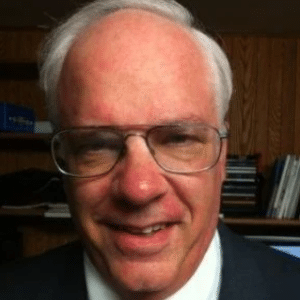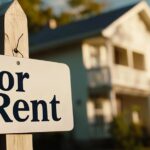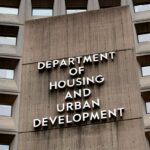This article originally appeared in the June 2025 edition of MortgagePoint magazine, online now.
For generations, homeownership has symbolized stability, prosperity, and a stake in the American Dream. Yet for millions of Americans today, that dream feels more like a mirage. With home prices soaring, inventories shrinking, and mortgage rates rising, first-time buyers—especially those from low- and moderate-income backgrounds—face an uphill battle. The traditional path to owning a home is now marked by economic roadblocks, systemic barriers, and increasing uncertainty.
Despite these challenges, a growing coalition of lenders, nonprofits, policymakers, and financial institutions is working to turn the tide. Through innovative programs, targeted assistance, and education initiatives, these groups aim not just to reopen the door to homeownership, but to rebuild the bridge leading to it.
A Challenging Landscape
Homeownership peaked in 2004 at 69.2%, noted Rod See, Cornerstone Capital Bank SVP and Managing Director of the Community Lending division at Cornerstone Capital Bank.
“In addition to strong job growth and rising household income, the increase was driven by government initiatives to expand access to homeownership such as relaxed lending standards and expanding mortgage products such as adjustable-rate and subprime loans. The government also promoted homeownership as part of the ‘American Dream.”’
In 1995, President Bill Clinton launched the National Homeownership Strategy, which had a goal of increasing homeownership by 8 million households by the year 2000. This initiative involved a partnership between public and private entities to address homeownership barriers among low- and moderate-income families, minorities, and other groups. The strategy focused on reducing costs, increasing financing availability, and simplifying the homebuying process.
However, the aggressive push to drive homeownership also contributed to the mortgage crisis less than 15 years later. The homeownership rate declined to a low of 62.9% in 2016 and now stands at just over 65%.
The major challenge with homeownership hasn’t been at the high end, or even with what are today considered moderately priced homes, but at the lower end of the housing market. According to cost of a starter home today is just north of $300,000, nearly double what it was 10 years ago. Moreover, according to Zillow, there are 233 cities in which the price of entry-level homes exceeds $1 million.
Costs for starter homes, and housing in general, continue to increase for a couple of reasons—the supply of housing is limited, and the costs of building materials keeps increasing.
According to the 2025 FHLBank of Chicago Targeted Community Lending Plan, the current affordable housing shortage can be traced to the overall decline of single-family homes over several decades and, in particular, the marked underbuilding of entry-level homes, where the most demand exists.
Reasons for the lack of new development to meet the demand for affordable units include steeply increasing raw material costs, lack of available construction labor, land use regulations, zoning restrictions limiting the ability to meet demand, lack of developers, and lack of land to develop, according to the FHLB of Chicago report. It noted, “These factors drive u costs, and the economics of new home construction, and specifically affordable, entry-level homes, often simply do not pencil out.”
Additionally, investors bought up much of the available housing stock during the economic downturn in 2008-2010, turning much of it into rental housing and thus removing it from the market.
Nationwide, affordable housing inventory is down in 94 of the 100 largest metro markets, the FHLB of Chicago report added. There is an estimated shortage of at least 3.8 million units nationwide. Home prices are up 47% since 2020 and 115% since 2010.
“Beyond inventory constraints, the sustained rising home prices and interest rates being higher for a period are both hurdles to homeownership,” said Tai Christensen, Arrive Home’s Chief Communications Officer and Chair of the American Mortgage Diversity Council. “Many qualified borrowers also struggle to save for a down payment, particularly in high-cost markets.”
See agrees. “Housing prices have outpaced income growth. High mortgage rates—while still historically reasonable—mean the total cost of housing is now higher than ever. For many would-be buyers, saving 5% to 20% for a down payment and covering closing costs is a significant challenge.”
See adds that credit score and debt-to-income (DTI) requirements can also be a barrier, especially as rising loan balances have contributed to lower scores and higher debt ratios.
The first challenges are the down payment and mortgage costs, but other homeownership costs, including insurance, property taxes, and repairs/upkeep have also risen significantly, presenting further stumbling blocks on the pathway to homeownership.
“Homeowners need to factor in the cost of repairs,” said Reggie O’Shields, FHLBank of Atlanta’s EVP and Chief Legal and Compliance Officer. “When you buy a home, you’re in charge of maintenance. There’s no landlord to call to fix the plumbing.”
These challenges have pushed up the average age of the first-time homebuyer to 38, compared to 29 just 15 years ago, according to the National Association of Realtors (NAR).
“Homeownership is more challenging today than it was five years ago, and even more challenging if you go any further back,” said Jeremy Davis, President of Mortgage at Southern Bancorp. “It just underscores the necessity that that our industry needs to work across the board on inventive solutions for how we help homeownership. This is a public-private problem that needs partnerships, policies, and plans to make it better.”
“Multi-pronged solutions are needed to facilitate access to affordable homeownership—strategies that both increase owner-occupied housing inventory and bridge the widening homeownership affordability gap for low and moderate-income households,” noted the FHLB of Chicago report. “For homeownership to be a viable option for low- and moderate-income households in the district, current affordability and supply gaps must be bridged.”
Plans to Promote Homeownership
The partnerships, policies, and plans working to address these issues include programs from financial institutions, mortgage lenders, housing advocates, and others.
“The big trend right now is specialized programs that address specific homeownership issues,” Davis said. “The biggest challenges tend to be cash to close or down payment and affordability.”
Lenders and other groups are offering down payment assistance programs, grants, forgivable loans, repayable second mortgages, and other programs to help get a consumer into a home, Davis said.
For example, Southern Bancorp Community Partners (SBCP), a Community Development Financial Institution (CDFI) and an affiliate of Southern Bancorp, Inc., offers the “Wealth Builders for Everyone Down Payment Assistance Program,” which will offer up to $12,000 as a forgivable loan that eligible prospective homebuyers may use toward their down payment, prepaids, and closing costs. The program is the product of a collaboration between SBCP, the nonprofit, loan fund, and financial development financial development arm of Southern Bancorp, Inc., and the institution’s mortgage division.
Southern also has partnerships with:
- Keepingly, a company that helps borrowers keep track of maintenance needs, savings, and resources to connect them with qualified professionals for household needs, and
- American Pledge Foundation, a nonprofit that provides an extra layer of security in case of emergency expenses or job loss during the first five years of homeownership.
Expanding access to down payment assistance programs, like Arrive Home, is one critical strategy, Christensen added. “Homebuyer education, particularly early in the homebuying journey, can also empower buyers to navigate the process more effectively. Additionally, we need to encourage more affordable housing development and support public-private partnerships that address both supply and financing challenges. Organizations like Arrive Home are deeply committed to bridging these gaps with real, community-driven solutions.”
FHLBanks Provide Major Affordable Housing Funding
The FHLBanks, which collectively are the largest single source of affordable housing funding, have numerous programs designed to put people on the path to homeownership—or at least residential occupancy.
“Homeownership is an American Dream, but maybe not the American Dream,” said O’Shields. “When you say the American Dream, you are implying that this is the appropriate path for every person.”
He added that the FHLBanks have a statutory obligation to commit at least 10% of their net income to affordable housing programs, and the FHLBank of Atlanta has committed at least 15% over the last few years. Those funds have supported:
- The Affordable Housing Program (AHP) General Fund supports 66 projects that will create or rehabilitate more than 4,200 affordable housing units.
- The AHP Homeownership Set-aside Program provides homeownership grants to more than 3,000 households for down payments, closing costs, and home rehabilitation assistance.
- The Workforce Housing Plus+ program, providing down payment and closing cost assistance to more than 1,300 households.
- Other programs.
In the spring, the FHLBank of Chicago opened its application period for its 2025 AHP General Fund. With $52 million available and up to $2 million per project, the program continues to advance the development and preservation of affordable housing throughout Illinois and Wisconsin.
AHP grants subsidize the acquisition, new construction, or rehabilitation of rental or owner-occupied housing.
Since 2017, FHLBank Chicago member First Mid Bank & Trust (First Mid) has helped secure more than $3 million in AHP funds in partnership with Coles County Regional Planning and Coles County Habitat for Humanity. These funds support essential home repairs and new home construction across rural central Illinois, ensuring that individuals and families in eight counties have access to safe and affordable housing.
Other FHLBanks also participate in AHP as well as other affordable housing programs.
There is a difference between having a home and owning a home, O’Shields points out. Rental housing is the appropriate path for some, even if only temporarily. So FHLBank of Atlanta offers programs for both affordable rentals and affordable homeownership.
“There are people that now is not the right time to own a home and that right time may never come,” O’Shields said. “These people need appropriate housing.”
Various projects in the FHLBank of Atlanta’s district offer “supportive housing.”
“The path to homeownership usually involves some time in rental housing,” O’Shields adds. “It’s important that we have high quality, affordable rental housing.”
Many prospective homeowners need to rent for some time in order to build up enough cash reserves to make the down payment and cover mortgage interest and the ongoing expenses (taxes, insurance, maintenance) of homeownership, O’Shields and Daivs said.
Education Is Paramount
Renting along the path to homeownership is part of the planning process that is more important today than ever before, experts agree.
“I’m a strong believer in homeownership,” said Alex Shekhtman, Founder of LBC Mortgage, a lender with non-qualified mortgages comprising 60% of its loans. “It’s a great thing to buy a property for yourself or as an investment, but I also believe not everyone should do it right away.”
Even with the significant homeownership challenges of today, people can still own a home if they prepare, Shekhtman said. “You start doing the things now [saving, education] that you need to do. You may not be able to buy today, but maybe you can in five years.”
During that time, the prospective homeowner can save for the down payment and other homeownership expenses, as well as learning about different home affordability programs.
However, many people don’t take the time to investigate different programs designed to help with affordable housing, according to Shekhtman. He said he had the same concerns when he emigrated to this country from Ukraine in the late 1990s. With no knowledge of U.S. mortgages, his family thought the entire house payment needed to be made at once.
It wasn’t until they learned more about the financial systems in this country that they were able to buy a home. Many others in the market for the first time, be they immigrants or native citizens, also have little knowledge of how the industry works and of the programs designed to help those who don’t qualify for traditional mortgages, Shekhtman said.
For example, FHA loans require a lower down payment, the money for which can come from a grant or other available affordable housing programs, Shekhtman explained. Beyond directing prospective homebuyers to programs like that, Shekhtman’s company will also explain that, as a renter, a person is still effectively paying a mortgage, taxes, etc.—that of the landlord—the costs of which are all part of the monthly rental payment. The difference is that in buying a home, the owner builds equity rather than the landlord.
“Our slogan is, everyone pays for a mortgage in the United States—you can pay for your own or somebody else’s,” Shekhtman said.
Matt Schwartz, Co-Founder of the VA Loan Network, agreed. “We see a lot of stuff where veterans have been turned down, but our goal is to provide the best possible service and to educate [the prospective borrower while we do it. We cater to manual underwriting and lower credit scores.”
Doing that and working with available programs can put vets (as well as other borrowers) into homes when they initially think they may not be able to qualify, according to Schwartz.
Many vets have limited savings, but VA and other programs can help make up for that deficiency, according to Schwartz, adding that more people can afford homes than some articles might lead people to believe.
“Planning is significantly more challenging and time-consuming than it used to be,” Davis said. Prospective homeowners need to work with professionals to make sure that their overall debt load is under control, that they are not living beyond their means, and that they have enough savings.
“All of these, of course, are things that are extremely challenging,” Davis said.
Financial education is a prime element of virtually all affordable housing programs. FHLBanks and various member financial institutions have partnered with various entities to help prospective homeowners with financial literacy.
“We require consumer counseling for anyone who receives our downpayment assistance,” Shields said. “You have to be prepared for the maintenance and insurance costs. Property taxes are going up.”
Another consideration, touched on in some of the educational programs, is the eventual sale of the property. While some will sell to move to another (sometimes more expensive) property, others will live in the affordable property for several years, with their heirs receiving the home. If there are multiple heirs, responsibility for the property after the owner’s passing needs to be discussed, O’Shields said. This issue is becoming increasingly important as one of the ways homeowners are affording homes today is through multi-generational acquisitions, with several family members contributing to the purchase.
“It’s very easy for the title to get tangled if you have multiple heirs,” O’Shields said. “This is another area that we have been focused on—keeping the home and passing it on to your heirs to build generational wealth.”
Schwartz added that he also advises potential homeowners that the sooner they get into a home, the sooner they can be building equity—equity they will lose out on if they wait for mortgage interest rates to drop. Additionally, if rates drop, the prices of homes will likely rise.
Beyond the existing programs, See recommended that policymakers should also consider legislation that limits investor penetration in certain markets, to help level the playing field for individuals and families trying to purchase a home to live in—not as an investment property.
“Increased tax incentives for first-time homebuyers could encourage more people to enter the market sooner,” See added. “Likewise, offering tax incentives to sellers and builders who prioritize homes for first-time buyers could boost inventory in the price ranges where it’s needed most. Finally, we need more specialized training and education in low- to moderate-income areas—both around homeownership and broader neighborhood revitalization. Helping people understand the process and empowering them to invest in their communities is key to creating sustainable, long-term homeownership opportunities.”
While today’s housing landscape poses significant challenges, it also offers an opportunity to rethink and reshape the path to homeownership. Real progress will require continued collaboration across the public and private sectors, robust investment in education and affordability initiatives, and policy reforms that empower individuals to become homeowners in responsible and sustainable ways. With the right tools and support, the dream of owning a home can endure, not as a fading promise of the past, but as a renewed reality for future generations.






